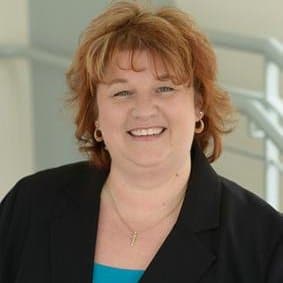 By Kim Bassett
By Kim Bassett
It’s a beautiful Monday morning, you’re on your way to work, suns coming up, and your smartphone starts binging and vibrating. You ask Siri to read your text messages and you have numerous messages that there are people in suits in your hospital lobby. They say they are there on behalf of CMS to do a JCAHO validation survey. Your heart sinks… it’s going to be one of those weeks.
You are never really prepared for a validation survey. These surveyors are not in your building to tell you how great you are—they are there to find out what is not perfect. They will come in weeks following your JCAHO survey so your team will easily get back into survey mode.
Expect to have multiple surveyors based on the size of your facility and the average daily census. Ten to fifteen surveyors shouldn’t be a surprise to you. They may not all arrive at the same time or even the same day. They will have experts in your building—facilities, infection control, nursing, dietitians, pharmacists, lab, radiology. Some surveyors will leave after they have completed the survey in their specialty.
Your Survey Survival List
- Set up a command center. Track everything that is requested. Track where they have been and any comments about their plans on where they are going next. Keep a copy of everything they request. Keep in mind, the surveyors can go anywhere they want, at any point in time.
- Fix the little things immediately. Have your facilities team fix the little things identified at the time the surveyors point them out. Then proactively survey your building to see if you have the same issues that can be fixed elsewhere.
- Keep it clean. Cleanliness is paramount. Ensure your team is focused on keeping the building spotless. Keep all carts, boxes, etc. out of the hallways.
- Be transparent. Encourage your staff to be open and honest with the surveyors. They will be talking with your staff without you present and they should feel comfortable be open and honest with the surveyors, knowing they have your full support in doing so.
- Be a cheerleader. Walk the halls encouraging your staff. It’s very important to look cool, calm and collected for their sake (even if you are not on the inside). Your team wants to do a good job and your confidence in them will promote a sense of “I believe in you” and “we can do this.”
- Communicate frequently. Provide frequent updates to your management team. This will alleviate worry and give your team of feeling of being in the loop.
- Hang out with the surveyors. Be around the surveyors as much as they will let you. Take notes, share information with your leadership team so they can share information with the staff on findings. This is also how you can address quick and easy fixes before the surveyors even leave the building. If something is identified by a surveyor that you believe is not accurate, ask for time to clarify the issue. Review the policy, discuss the issue with staff, and then have your best expert on the issue have the conversation with the surveyor.
- Have your files ready and accessible. They will ask to see a selection of personnel files and medical staff credentialing files based on the people in your organization they meet. Make sure those files are ready to be reviewed.
A CMS survey is serious and stressful — more stressful than even JCAHO. That’s why it is doubly important to remain calm, respond quickly and efficiently to the surveyors and perhaps most of all – trust that your team. Trust that they will follow your lead and pull together and serve you and the organization to the best of their ability. Truly, this is the time to rise to the occasion. The surveyors have a job to do, so despite your concerns over the survey, accept that it is happening and do everything you can to meet and/or exceed every request. This acquiescence to their needs will not go unnoticed.
Throughout the year, our writers feature fresh, in-depth, and relevant information for our audience of 40,000+ healthcare leaders and professionals. As a healthcare business publication, we cover and cherish our relationship with the entire health care industry including administrators, nurses, physicians, physical therapists, pharmacists, and more. We cover a broad spectrum from hospitals to medical offices to outpatient services to eye surgery centers to university settings. We focus on rehabilitation, nursing homes, home care, hospice as well as men’s health, women’s heath, and pediatrics.







